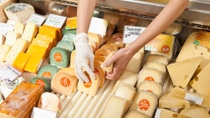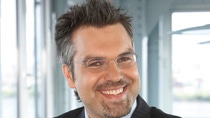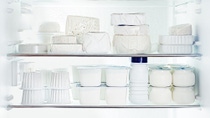Chi siamo
Well packaged

Today, packaging must do more than protect food. Nicolas Eilken, 3D Design Director at design and branding agency Lothar Böhm and lecturer in packaging at the Brand Academy of Hamburg in Germany, explains the many roles it fulfills.
Creating Chemistry: Industry is constantly developing new materials for packaging and protecting foods as well as reducing environmental impact. With such diversity, how do you choose the right packaging for your designs – to pack cheese, for example?
Nicolas Eilken: That would depend on the type of cheese. Some types of cheese ripen in their packaging and need air to circulate, while others require a barrier against oxygen. Consumers’ needs also play a role, as does presentation – things like a viewing window, the cheese’s appearance on the shelf, and differentiation from the competition. And of course, the material needs to be sustainable.
Many consumers decide which products to buy when browsing the supermarket shelves. How can packaging encourage them to make a purchase?
Freshness, for example, is primarily expressed through graphic design, while the material itself can convey a sense of sustainability or premium quality. If consumers pick up the product, they might see that the packaging is easy to open and resealable, which makes it convenient to use. All these factors can persuade them to purchase, and furthermore, to return to the brand the next time they shop.
Your design agency Lothar Böhm has offices in Hamburg, London and Warsaw. Do Polish people prefer different things to the British or the Germans when it comes to food packaging?
Comparatively speaking, the Germans are less willing to experiment and are very rational. Packaging should convey a sense of quality; customers look for high quality at a good price. They also want to see what they are buying. British people are a step ahead in terms of design – they are even happy with pink packaging for cheese! In Poland, meanwhile, packaging must be authentic and playful, with even brighter colors. As each nation has different habits and customs, it is difficult in the food industry to produce packaging that can be employed globally.
Rising levels of packaging waste continue to be a problem. What are you doing to counteract this?
We are looking at ways of reducing volumes, to cut the burden on transport and logistics. In addition, we are working to save materials by minimizing the thickness of packaging.
Are there any food packaging functions that you would like to see developed?
Most functions can already be carried out, such as cooling or self-heating packaging. Scientists are currently working on how to add moving images or changing messages to packaging. This would allow us to communicate far more engagingly with smaller packaging units. It remains prohibitively expensive, but I think it’s on its way.

Nicolas Eilken
Design Director 3D at Lothar Böhm
After training to be an aircraft engineer, Nicolas Eilken studied architecture at the Hamburg University of Applied Sciences. While still a student, he started working as a designer at Peter Schmidt Design. Since 2007, he has been working for Lothar Böhm GmbH, where he established the Structural Design department, which he currently manages as Design Director. Designs by Eilken and his team have won prizes, including the red dot and the iF Gold Award for Product Design, in 2009, 2010 and 2012.
